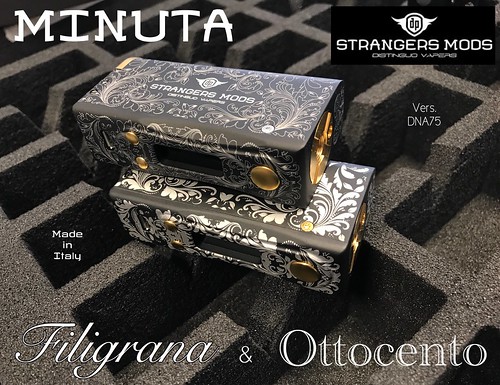Us of the transcript to be identified where it joins the 59-terminus. Multiple, independent cRT-PCR generation of cox3H1-6, cox3H7, and cox3 transcripts confirmed that this technique faithfully identifies the mRNA ends (Data S1). These cRT-PCR data revealed that precursor transcripts cox3H1-6 and cox3H7 correspond precisely to the respective sequence components of the complete cox3 transcript. The 59 end of cox3H1-6 is exactly the same length as cox3, and the 59 end of cox3H7 ends at the nucleotide 737, the exact position where it is subsequently joined to the cox3H1-6 transcript (Fig. 1B). The 39 end of cox3H1-6 is oligoadenylated at position 731 (as previously 12926553 described; Fig. 1B), and cRT-PCR shows that it receives MedChemExpress GNF-7 between 16?8 A nucleotides. The 39 end of cox3H7 matches the full-length cox3 end precisely in sequence and oligoadenylation site, and both bear 13?6 A nucleotides. These data suggest that the dominant precursor species contain only sequence that will be incorporated into the complete cox3 mRNA. To explore the novelty of this trans-splicing process seen in K. veneficum, we have examined transcripts of cox3 in three furtherdinoflagellate taxa – Alexandrium catenella, Symbiodinium sp., and Amphidinium carterae – that represent a broad range of dinoflagellate diversity. cRT-PCR was used to recover transcripts of cox3 sequence and to characterise their lengths and transcript termini (Fig. 1B). Similar to K. veneficum, all new taxa show evidence of trans-splicing by the presence of truncated transcripts equivalent to cox3H1-6 and cox3H7, as well as a full-length cox3. The 59 end of cox3H7 is conserved in length in all four taxa, despite sequence variation in the first eight nucleotides (Fig. 1B, Data S1). In all cases splicing occurs directly onto the first nucleotide of this transcript, which is a U in every  case. The 39 boundary of cox3H16, however, is variable. While A. catenella cox3H1-6 is oligoadenylated at precisely the same position as K. veneficum,
case. The 39 boundary of cox3H16, however, is variable. While A. catenella cox3H1-6 is oligoadenylated at precisely the same position as K. veneficum,  Symbiodinium sp. is oligoadenylated at a position five nucleotides earlier, and A. carterae six nucleotides later (Fig. 1B). This variation, however, does not affect the mature cox3 length. The five nucleotide coding gap in A. catenella is filled with five A nucleotides exactly as for K. veneficum, presumably from the oligoadenosine tail. In Symbiodinium sp. the gap of 10 nucleotides is filled with 10 A nucleotides. In A. carterae, where no coding gap exists, splicing occurs one nucleotide upstream of the oligoadenosine tail so no non-coded A nucleotidesFigure 1. cox3 trans-splicing in diverse dinoflagellates. A. Schematic of dinoflagellate Cox3 showing seven predicted trans-membrane helices encoded by fragmented cox3 coding sequences cox3H1-6 and cox3H7. B. Alignment of nucleotide sequence at the splice site of transcript precursors cox3H1-6 and cox3H7, and the splice Fruquintinib cost product cox3. Corresponding sequences are shown for Karlodinium veneficum (K. ven), Alexandrium catenella (A. cat), Symbiodinium sp. (Sym) and Amphidinium carterae (A. car). The range of lengths observed for oligoadenylated tails on cox3H1-6 is shown in superscript. Red highlighting indicates A nucleotides from the oligoadenylated tail incorporated into the cox3 splice product. C. Dinoflagellate Cox3 amino acid sequence alignment at the splice site between helices 6 and 7. Amino acid codons determined by inclusion of oligoadenylation nucleotides are shown with red highlighting. doi:10.1371/journal.pone.0056777.Us of the transcript to be identified where it joins the 59-terminus. Multiple, independent cRT-PCR generation of cox3H1-6, cox3H7, and cox3 transcripts confirmed that this technique faithfully identifies the mRNA ends (Data S1). These cRT-PCR data revealed that precursor transcripts cox3H1-6 and cox3H7 correspond precisely to the respective sequence components of the complete cox3 transcript. The 59 end of cox3H1-6 is exactly the same length as cox3, and the 59 end of cox3H7 ends at the nucleotide 737, the exact position where it is subsequently joined to the cox3H1-6 transcript (Fig. 1B). The 39 end of cox3H1-6 is oligoadenylated at position 731 (as previously 12926553 described; Fig. 1B), and cRT-PCR shows that it receives between 16?8 A nucleotides. The 39 end of cox3H7 matches the full-length cox3 end precisely in sequence and oligoadenylation site, and both bear 13?6 A nucleotides. These data suggest that the dominant precursor species contain only sequence that will be incorporated into the complete cox3 mRNA. To explore the novelty of this trans-splicing process seen in K. veneficum, we have examined transcripts of cox3 in three furtherdinoflagellate taxa – Alexandrium catenella, Symbiodinium sp., and Amphidinium carterae – that represent a broad range of dinoflagellate diversity. cRT-PCR was used to recover transcripts of cox3 sequence and to characterise their lengths and transcript termini (Fig. 1B). Similar to K. veneficum, all new taxa show evidence of trans-splicing by the presence of truncated transcripts equivalent to cox3H1-6 and cox3H7, as well as a full-length cox3. The 59 end of cox3H7 is conserved in length in all four taxa, despite sequence variation in the first eight nucleotides (Fig. 1B, Data S1). In all cases splicing occurs directly onto the first nucleotide of this transcript, which is a U in every case. The 39 boundary of cox3H16, however, is variable. While A. catenella cox3H1-6 is oligoadenylated at precisely the same position as K. veneficum, Symbiodinium sp. is oligoadenylated at a position five nucleotides earlier, and A. carterae six nucleotides later (Fig. 1B). This variation, however, does not affect the mature cox3 length. The five nucleotide coding gap in A. catenella is filled with five A nucleotides exactly as for K. veneficum, presumably from the oligoadenosine tail. In Symbiodinium sp. the gap of 10 nucleotides is filled with 10 A nucleotides. In A. carterae, where no coding gap exists, splicing occurs one nucleotide upstream of the oligoadenosine tail so no non-coded A nucleotidesFigure 1. cox3 trans-splicing in diverse dinoflagellates. A. Schematic of dinoflagellate Cox3 showing seven predicted trans-membrane helices encoded by fragmented cox3 coding sequences cox3H1-6 and cox3H7. B. Alignment of nucleotide sequence at the splice site of transcript precursors cox3H1-6 and cox3H7, and the splice product cox3. Corresponding sequences are shown for Karlodinium veneficum (K. ven), Alexandrium catenella (A. cat), Symbiodinium sp. (Sym) and Amphidinium carterae (A. car). The range of lengths observed for oligoadenylated tails on cox3H1-6 is shown in superscript. Red highlighting indicates A nucleotides from the oligoadenylated tail incorporated into the cox3 splice product. C. Dinoflagellate Cox3 amino acid sequence alignment at the splice site between helices 6 and 7. Amino acid codons determined by inclusion of oligoadenylation nucleotides are shown with red highlighting. doi:10.1371/journal.pone.0056777.
Symbiodinium sp. is oligoadenylated at a position five nucleotides earlier, and A. carterae six nucleotides later (Fig. 1B). This variation, however, does not affect the mature cox3 length. The five nucleotide coding gap in A. catenella is filled with five A nucleotides exactly as for K. veneficum, presumably from the oligoadenosine tail. In Symbiodinium sp. the gap of 10 nucleotides is filled with 10 A nucleotides. In A. carterae, where no coding gap exists, splicing occurs one nucleotide upstream of the oligoadenosine tail so no non-coded A nucleotidesFigure 1. cox3 trans-splicing in diverse dinoflagellates. A. Schematic of dinoflagellate Cox3 showing seven predicted trans-membrane helices encoded by fragmented cox3 coding sequences cox3H1-6 and cox3H7. B. Alignment of nucleotide sequence at the splice site of transcript precursors cox3H1-6 and cox3H7, and the splice Fruquintinib cost product cox3. Corresponding sequences are shown for Karlodinium veneficum (K. ven), Alexandrium catenella (A. cat), Symbiodinium sp. (Sym) and Amphidinium carterae (A. car). The range of lengths observed for oligoadenylated tails on cox3H1-6 is shown in superscript. Red highlighting indicates A nucleotides from the oligoadenylated tail incorporated into the cox3 splice product. C. Dinoflagellate Cox3 amino acid sequence alignment at the splice site between helices 6 and 7. Amino acid codons determined by inclusion of oligoadenylation nucleotides are shown with red highlighting. doi:10.1371/journal.pone.0056777.Us of the transcript to be identified where it joins the 59-terminus. Multiple, independent cRT-PCR generation of cox3H1-6, cox3H7, and cox3 transcripts confirmed that this technique faithfully identifies the mRNA ends (Data S1). These cRT-PCR data revealed that precursor transcripts cox3H1-6 and cox3H7 correspond precisely to the respective sequence components of the complete cox3 transcript. The 59 end of cox3H1-6 is exactly the same length as cox3, and the 59 end of cox3H7 ends at the nucleotide 737, the exact position where it is subsequently joined to the cox3H1-6 transcript (Fig. 1B). The 39 end of cox3H1-6 is oligoadenylated at position 731 (as previously 12926553 described; Fig. 1B), and cRT-PCR shows that it receives between 16?8 A nucleotides. The 39 end of cox3H7 matches the full-length cox3 end precisely in sequence and oligoadenylation site, and both bear 13?6 A nucleotides. These data suggest that the dominant precursor species contain only sequence that will be incorporated into the complete cox3 mRNA. To explore the novelty of this trans-splicing process seen in K. veneficum, we have examined transcripts of cox3 in three furtherdinoflagellate taxa – Alexandrium catenella, Symbiodinium sp., and Amphidinium carterae – that represent a broad range of dinoflagellate diversity. cRT-PCR was used to recover transcripts of cox3 sequence and to characterise their lengths and transcript termini (Fig. 1B). Similar to K. veneficum, all new taxa show evidence of trans-splicing by the presence of truncated transcripts equivalent to cox3H1-6 and cox3H7, as well as a full-length cox3. The 59 end of cox3H7 is conserved in length in all four taxa, despite sequence variation in the first eight nucleotides (Fig. 1B, Data S1). In all cases splicing occurs directly onto the first nucleotide of this transcript, which is a U in every case. The 39 boundary of cox3H16, however, is variable. While A. catenella cox3H1-6 is oligoadenylated at precisely the same position as K. veneficum, Symbiodinium sp. is oligoadenylated at a position five nucleotides earlier, and A. carterae six nucleotides later (Fig. 1B). This variation, however, does not affect the mature cox3 length. The five nucleotide coding gap in A. catenella is filled with five A nucleotides exactly as for K. veneficum, presumably from the oligoadenosine tail. In Symbiodinium sp. the gap of 10 nucleotides is filled with 10 A nucleotides. In A. carterae, where no coding gap exists, splicing occurs one nucleotide upstream of the oligoadenosine tail so no non-coded A nucleotidesFigure 1. cox3 trans-splicing in diverse dinoflagellates. A. Schematic of dinoflagellate Cox3 showing seven predicted trans-membrane helices encoded by fragmented cox3 coding sequences cox3H1-6 and cox3H7. B. Alignment of nucleotide sequence at the splice site of transcript precursors cox3H1-6 and cox3H7, and the splice product cox3. Corresponding sequences are shown for Karlodinium veneficum (K. ven), Alexandrium catenella (A. cat), Symbiodinium sp. (Sym) and Amphidinium carterae (A. car). The range of lengths observed for oligoadenylated tails on cox3H1-6 is shown in superscript. Red highlighting indicates A nucleotides from the oligoadenylated tail incorporated into the cox3 splice product. C. Dinoflagellate Cox3 amino acid sequence alignment at the splice site between helices 6 and 7. Amino acid codons determined by inclusion of oligoadenylation nucleotides are shown with red highlighting. doi:10.1371/journal.pone.0056777.